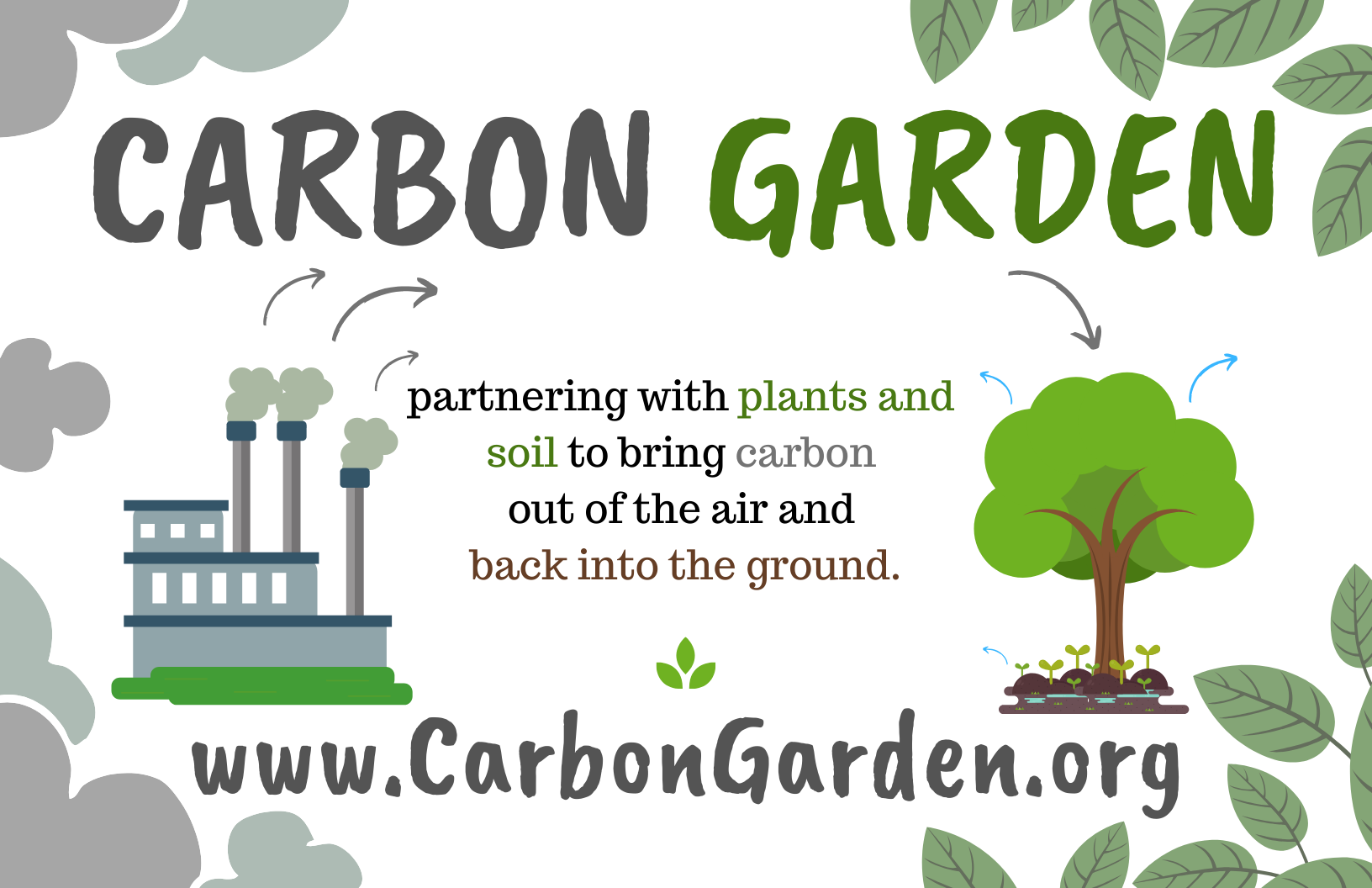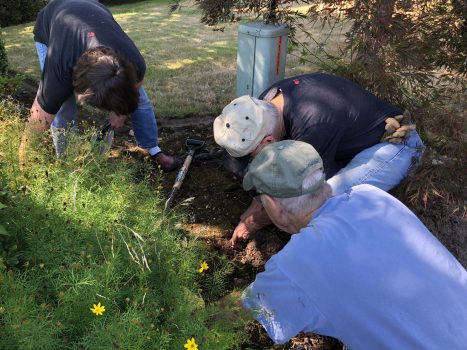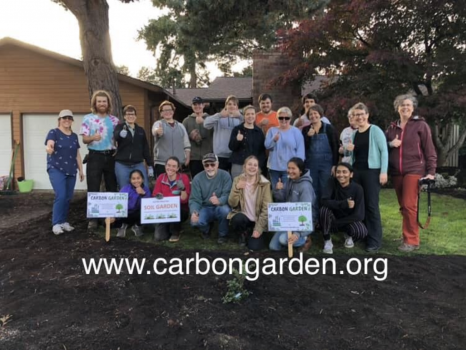
What Are Carbon Gardens?
Carbon Gardens are natural spaces designed to facilitate the work of soil-dwelling creatures, plants and trees to pull excess carbon dioxide out of the air in order to draw carbon back into the ground. Carbon Gardens vary widely. But all are designed to help re-balance the carbon cycle by working with earth’s natural processes to reduce excess carbon dioxide in the atmosphere which is destabilizing the climate and bring carbon back into the ground where it is needed to enrich depleted soil.
Carbon Gardens may exist in many places such as portions of a household yards, apartment balconies with container plantings, hospital courtyards, workplace window gardens, vacant lots, and across school grounds.
How do we start a Carbon Garden?
- Learn about earth’s carbon cycle and the particular ways plants, worms and microbes can help sequester carbon in the soil.
- Identify a patch of land or a container garden where you will deepen your relationships with the soil and the life forms that live there by experimenting with natural strategies that help re-balance the carbon cycle. While some Carbon Gardens grow vegetables, others nurture diverse native plantings, others cultivate beauty with blooming perennial flowers, while still others experiment with cover crops to regenerate new, carbon rich soil.
- Carbon Garden Installation in 6 Easy Steps Document (also see the video above)
- Place a sign in the Carbon Garden. The sign might simply say “Carbon Garden” or “www.CarbonGarden.org.”* It may also be decorated with visual graphics or art. You are also welcome to simply use the sign we created which (pictured above): Carbon Garden.
Why Place A Carbon Garden Sign?
The primary purposes of Carbon Garden signs are to:
- draw people into conversation with one another for the purpose of ongoing learning,
- engage neighborhoods in taking individual and collective action to restore ecological balance, and
- deepen our relationships with one another and the places where we live, work and learn.
10 Carbon Capturing Practices from GreenAmerica
Resources
- Composting 101
- Community Carbon Resources for Urban Landscapes
- Can Soil Gardens really have an Impact on Global Warming
- Carbon Garden Introduction -One Backyard at a Time
- Resource List (St. Andrew CC Team)
- A Year of Carbon Gardens – What We’ve Learned (St. Andrew CC Team)
Seeking Faith Communities for Carbon Garden Creation
EcoFaith is seeking to engage 25 or more communities of faith in creating Carbon Gardens. We will list you here on the website and on Facebook. Contact Office@EcoFaithRecovery.org with:
- name of your faith community
- website (and specific link to your eco-team
- a picture of your garden with the sign.
Spotlight on St. Andrew Community Carbon Team
“Carbon Gardens” which may have other names such as “soil gardens” are one dimension of EcoFaith Recovery’s overarching Community Carbon initiative. They are an easy way to engage a household, school, workplace, organization or faith community in the kinds of learning, action, and justice-making that the Community Carbon initiative seeks to make cultivate. For example, St. Andrew Lutheran Church in Beaverton, Oregon has a Soil Research Team as one dimension of its role as EcoFaith Recovery’s first Community Carbon pilot Community. They have not only encouraged their members to plant Soil Gardens/Carbon Gardens but have also been engaging in science-based research and observation to determine what kinds of strategies might best enable suburban yarders to sequester carbon in the soil around their homes.
The team writes:
We measured the area of several mulch-covered beds to estimate the amount of carbon in the soil of those beds. The carbon in the soil is derived from the decomposition of the mulch covering that soil. That carbon is primarily contained in an organic-rich layer just below the mulch.
Next, we dug a hole in one bed to identify and measure the thickness of the organic-rich layer. We took a sample in a plastic bag of the organic-rich layer so that we can have it analyzed for organic (carbon) content.
Get Started Now
Take advantage of the research already available from other sources such as the 10 Carbon-Capturing Practices available from Green America. Plant your own Carbon Garden, put a sign in it, and invite your neighbors to join you as we reconnect with the amazing processes knit into the fabric of creation!
*Notice that the link to www.carbongarden.org on the sign leads to a description of Carbon Gardening that is not attached to any organization and no religious perspective so that anybody will feel welcome to join the movement.


